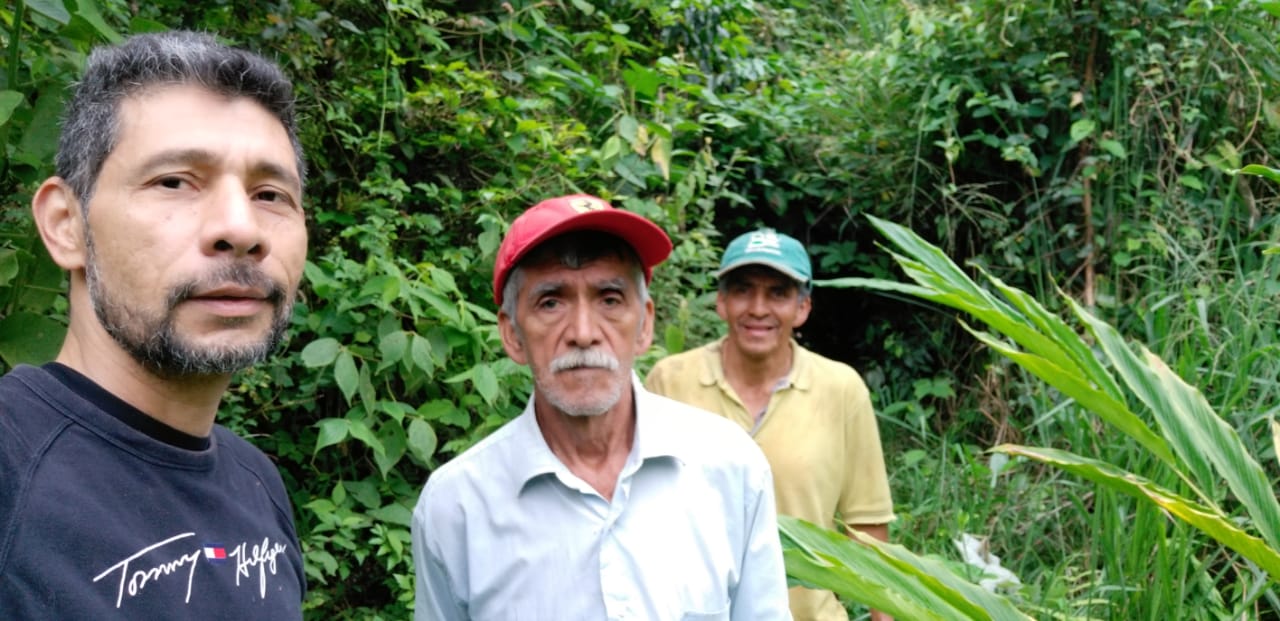





Brew Guide:
Best Brewed with: Filter
Lightest Roaster Influence: We're finding this lot to be incredibly sweet and expressive at the lightest roast influence - we threw a curveball at the competitors by roasting ultra-light for the comp, for mainline release we've extended the roast by a fraction just to round out the body of the coffee.
Best Rested: 3-4 weeks
Filter: 60-62g/L & 96°C, with rest we like to move down to 92°C
Espresso: Very soluble - we like 18g to 45g, in 25-30s for a syrupy shot. Can be opened up to a turbo
We’re tasting: Uniquely herbal/spicy aromatics - lemongrass, galangal, coconut, vanilla & rosehip. In the cup we're finding upfront notes of kaffir lime, vanilla brioche, white chocolate bounty bars and rosehip jelly, all supported on a superbly sweet & buttery base with warming spices that is uncannily like biscoff spread. As it cools becoming like raspberry & rose cheesecake with a biscoff base. Unique and very delicious
Traceability
Country of Origin: |
Colombia |
Region: |
El Dorado, Huila |
Producer: |
Eder Bedoya |
Farm: |
Villa Esperanza |
Variety: |
Chiroso |
Elevation: |
1650 MASL |
Process: |
Inoculated Washed: Native microorganisms isolated from the farm were cultured for 8 to 10 days to prepare a starter culture. Ripe cherries were oxidised in tank for 36 hours before depulping. Depulped parchment coffee inoculated with the prepared microorganisms, and fermented for 48 hours with controlled oxidation intervals of 1 hour applied every 5 hours. Lightly washed to remove remaining mucilage. Dried under direct sunlight before finishing in the shade. |
Import Partner: |
MiCafe |
Harvest |
Crop 25/26, Arrived UK: 03/07/25. New Purchasing Relationship |
The Story
Eder Bedoya's route to coffee production and export began in Líbano, Tolima, where he grew up surrounded by Colombia's coffee-growing culture. At 18 he moved to Bogotá to work in international trade, spending the following decades building expertise in export logistics and customs processes before establishing his own export business more than twenty years ago, later returning to agricultural production with a focus on both coffee and cardamom cultivation at Villa Esperanza in El Dorado, Huila.
Eder has been integral to Jonny's work at Micafe from the beginning, providing consistent support with Colombian sourcing and exports, and this relationship has built the kind of trust that allows for genuine exploration of new processing methods and varieties. When this particular lot arrived for evaluation it was cupped blind alongside other potential additions to the Micafe portfolio, and the coffee's immediate distinctiveness made the decision straightforward. What stood out was how clearly defined everything was in the cup: Chiroso's characteristic floral and herbal qualities were present but intensified, sitting alongside a level of sweetness and complexity that suggested the processing had amplified rather than obscured the varietal expression.
Chiroso itself carries an unusual history, having been misidentified as a Caturra mutation for over a decade until DNA analysis revealed it to be an Ethiopian landrace. Originally discovered in Urrao, Antioquia, the variety gained wider recognition after Carmen Montoya's lot achieved the highest score in the 2014 Colombian Cup of Excellence, and since then three distinct phenotypes have been documented: the original Bourbon Chiroso, the shorter Caturra Chiroso, and a base Chiroso. Research indicates that Caturra Chiroso appears to be a regression of Bourbon Chiroso, with cherry characteristics varying significantly between types and requiring selective harvesting for quality.
The Ethiopian genetics and inherently high sugar content make Chiroso particularly responsive to high technical intervention processing, and in this case Eder isolated native microorganisms from Villa Esperanza itself, culturing them over eight to ten days before inoculation. The resulting fermentation, with controlled oxidation intervals applied throughout, has produced something that demonstrates what becomes possible when varietal potential and fermentation techniques align.
The decision to use this coffee in the finals of the UK Independent Filter Championships came from a deliberate intent to challenge competitors with something that would test their adaptability and interpretation. After two rounds featuring more conventional processes, the finals required a coffee that behaved differently, and high technical intervention coffees roasted to the lightest degree possible demand a totally different brewing technique - considering that competitors only received the practice coffee in the hours before going on stage, we thought it was a fun curveball to throw.
We thought people might have expected us to put these sorts of coffees in from the start - but sometimes these process-forward coffees can be hugely expressive no matter how you brew them - this one had a little more nuance and threads to pull, so it was the perfect match. We'll be launching the final competition coffee (the Northern heats lot) in the coming weeks, as we work through a FIFO arrival schedule!
- Choosing a selection results in a full page refresh.
- Opens in a new window.






